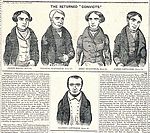 Tolpuddle Martyrs
Tolpuddle Martyrs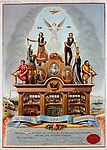 Ammalgamated Society of Engineers, Machinists, Millwrights, Smiths and Pattern Makers
Ammalgamated Society of Engineers, Machinists, Millwrights, Smiths and Pattern Makers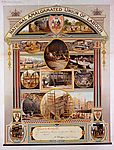 National Ammalgamated Union of Labourers
National Ammalgamated Union of Labourers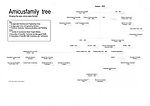 The growth of AMICUS
The growth of AMICUS 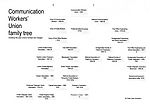 The growth of CWU
The growth of CWU 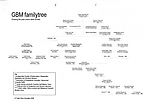 The growth of GMB
The growth of GMB 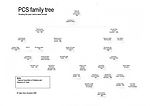 The growth of PCS
The growth of PCS 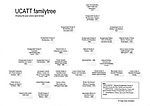 The growth of UCATT
The growth of UCATT 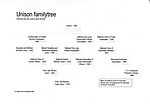 The growth of UNISON
The growth of UNISON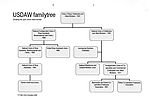 The growth of USDAW
The growth of USDAW

The Industrial Revolution (mid 18th Century - early 20th Century) changed the working climate and culture of Britain. The mechanisation of industries and factories greatly altered society. It brought workers together, housing needs changed and working conditions were different. It is at about this time that groups of workers started to organise themselves into Societies, paying subscriptions and holding meetings to support each other in times of need.
1780 Friendly Society of Mechanics (Bolton, Blackburn & Chorley)
1799 – 1800 Combination Act Reform Laws forbidding groups of people meeting for the purpose of political reform. Pressure was put on the government by employers, for fear of political unrest similar to that seen in France.
1802 Wolverhampton Tin Plate Workers’ Society
1809 Friendly Ironmongers’ Society
1819 Peterloo Massacre. Manchester Patriotic Union Society held a meeting to discuss parliamentary reform. The local Magistrates were scared by the gathering of a 50,000 strong crowd, and ordered they be dispersed. 11 people were killed and four hundred injured. A hundred of these were women. The organisers and journalists writing about the event were later imprisoned.
1819 Tory government introduced the Six Acts in reaction to Peterloo – including; “taxes on knowledge”, which levied heavy taxes on publications to combat the popularity of "radical" newspapers, and limiting the size and purpose of meetings. Blasphemy and Sedition Acts allowed for stronger punishments and the banishment of offending publications.
1824 Steam Engine Makers' Society
1825 Combination Act narrowly defined the rights of Trade Unions and anything outside of the Act was liable to prosecution.
1826 Friendly Society of Mechanics
1833 Friendly Society of Engineers
1833 Grand National Consolidated Trade Unions was formed in an attempt to bring together and organise societies nationally, and to increase strength and bargaining power. This enabled unskilled labourers to join a “general” union.
Many small local clubs joined the Grand National. Their involvement was often kept secret to stop persecution by employers. The organisation seems to have been based on some Masonic practice and ritual, leading to secrecy. This led the government to be suspicious, and the police to take action. Some union delegates were arrested in Exeter carrying ‘ 2 wooden axes, 2 large cutlasses, 2 death masks, and 2 white garments or robes, a large figure of Death with dart and hourglass, a Bible and Testament.’
1834 Tolpuddle Trials. Six Dorset farm labourers, who were paid a very low wage, and lived in poverty, joined a union to give themselves more power. They were arrested on charges of making illegal oaths and were transported to Australia “as an example to others.” The men had become heroes to the working masses, and following mass protests the men’s sentences were revoked, and they returned from Australia.
1840 National Charter Association
1842 General Strike began with the cotton workers' dispute, when they were not prepared to accept a 25% pay cut.
1850 Trade union membership stood at 100,000. The country had settled into steady economic and industrial growth
1851 Amalgamated Society of Engineers (ASE) had 10,841 members
1851 Amalgamated Society of Carpenters and Joiners
1851 Amalgamated Society of Engineers, Machinists, Millwrights, Smiths and Pattern Makers.
1852 Engineers' strike
1859 – 1860 London Builders' Strike
1860 London Trades Council, formed following the Builders' strike.
1861 ASE increased its membership 33,000, in 186 branches.
1861 Workers Operative Bricklayers' Society
1867 Royal Commission set up to investigate Trade Unions.
1868 Trades Union Congress. Trades Councils from across the country came together to form the TUC.
1870 National Union of Teachers
1871 Criminal law Amendment Act. Liberal Government criminalises picketing.
1871 TUC's Parliamentary Committee.
1871 Trade Union Act recognises and protects trade unions as legal corporations.
1872 National Union of Agricultural Workers
1874 Women’s Protective and Provident League (Later became the Women's Trade Union League, the women's equivalent of the TUC)
1874 Over a million workers were trade union members
1874 Status of trade unions enhanced in government legislation
1874 The Factory Act legislated for a 10 hour working day.
1875 Conspiracy and Protection of Property Act. Tory Government decriminalises picketing
1884 The Fabian Society
1886 Sheffield Outrages. Sheffield unionists were accused of using arson and murder to intimidate non unionists. As a result, a Royal Commission was set up to investigate the trade unions.
1887 National Amalgamation of Sailors' and Firemen's Union
1888 The Matchgirls’ Strike (Read more about this in the section on the Matchgirls' Strike)
1888 Miners’ Association
1889 Dock, Wharf, Riverside and General Labourers' Union
1889 National Union of Seamen
1889 Chainmakers' and Strikers' Association
1889 Gas workers’ Strike, due to workers being laid off, leading to the setting up of National Union of Gasworkers and General Labourers. Within 5 weeks the company had agreed to reduce the working day to 8 hours, therefore providing more work for the unemployed, as another shift a day had been created.
1889 Dockers’ strike led by the Tea Operatives' and General Labourers’ Association (inspired by the Matchgirls’ strike) over pay and conditions. Financial backing from socialist groups allowed the strikers to hold out, and their demands were met.
1890 May Day demonstration for 8 hour day
1890 National Amalgamated Union of Labourers
1891 National Union of Shop Assistants
1895 Change of TUC standing orders in 1895 introducing block voting. Trades councils (regarded as militant) were banned from sending delegates to the annual conference of the TUC.
1896 Outlawing of peaceful picketing following the case of Lyons vs Wilkins,
1896 Scottish TUC formed. Many leaders also members of Independent Labour Party.
1900 TUC and Socialist groups in Britain held a conference and formed The Labour Representation Committee in order to promote legislation in the interests of workers, by cooperating with any political party. (Read more about this in The Labour Movement Section)
1901 Taff Vale judgement – Employer successfully sued Union for £23,000 loss of earnings
1903 Women’s Trade Union League (Previously the Women's Protective and Provident Society)
1906 National Federation of Women Workers (Amalgamated with the National Union of General Workers in 1921)
1906 Labour Representation Committee becomes the Labour Party following the General Election. (Read more about this in The Labour Movement Section)
1906 Trades Dispute Act – removed trade union liability
1909 National Union of Ships' Stewards, Cooks, Butchers, Bakers.
1910 National Transport Workers’ Federation
1913 National Union of Railway Men
1914 Triple Alliance. National Union of Railwaymen, National Union of Mineworkers, National Transport Workers’ Federation.
1914 - 1918 An Industrial truce was called for the duration of WW1.
1915 Clyde Workers’ Committee
1922 Transport and General Workers' Union, united 50 organisations, making it the world’s largest trade union.
1924 National Union of General and Municipal Workers (Previously the National Union of General Workers)
1925 Mine owners announce reduction in wages, the conservative government intervened and supplied a subsidy to offset the wage drop. This became known as "Red Friday", because it was seen as a victory for working classes. However this was only a short term solution and events that followed led to the General Strike of 1926.
Following the decline in manufacturing in Britain after WW1, there was mass unemployment. This led to trade union membership slumping in the 1920s. As industry recovered in the 1930s, trade union membership began to rise once again.
Rollover the captions in the box to see the available images in thumbnail format, click the caption to see the full-size image
| Reference: | 695 |
| Keywords: | |
| Archive Ref: | |
| Updated: | Wed 9 Jul 2008 - 12 |
| Interpretation written by | Jenny Ermoyenous |
| Author's organisation | Curatorial |
| Organisation's website |